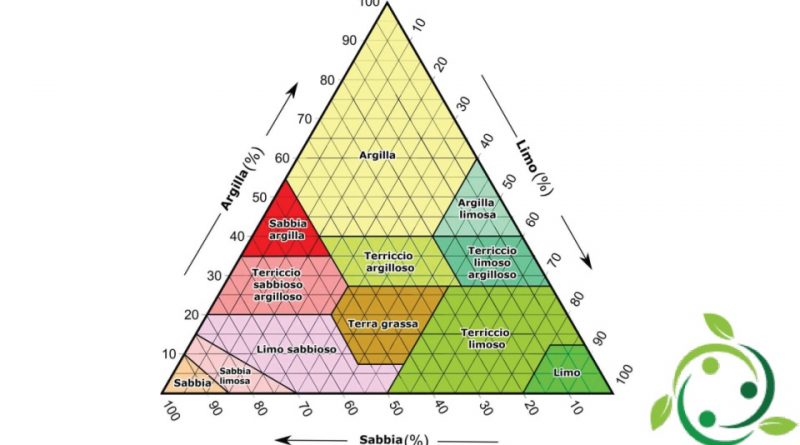Soil texture
Soil texture
Weaving or granulometry is the characteristic of the soil that allows it to be classified on the basis of the percentage composition of its solid particles. The particles that compose the soil have different sizes, and depending on their size and the percentage distribution of these in the soil, they have different granulometric classes. To each granulometric class corresponds a type of soil with different chemical-physical characteristics and therefore with different mechanical properties, water and air retention and, ultimately, fertility. The knowledge of the soil texture is therefore fundamental for the agronomic choices, the crops to be adopted and for all the agricultural practices to be used. So the knowledge of the soil texture is the first survey to be carried out for the cultivation and agronomic choices; this is because it is practically impossible to change the texture of a land (if not with considerable costs and with incorrect agroecological choices).
There are two main systems of classification of the weaving but both modalities distinguish the fraction of the soil in: coarse (sand and skeleton), fine (the silty fraction) and very fine (the clayey fraction).
One of the two methods, which is that of the USDA (United States Department of Agriculture) which is the most adopted in the world, distinguishes the classes of diameter of the earth in:
• clay, with a diameter of less than 2 microns;
• silt, diameter between 2 and 50 microns;
• sand, between 50 microns and 2 mm. This class is divided into subclasses:
• very fine sand, between 50 and 100 microns;
• fine sand, between 100 and 250 microns;
• medium sand, between 250 and 500 microns;
• coarse sand, between 500 microns and 1 mm;
• very coarse sand, from 1 to 2 mm.
According to the classification adopted by the ISSS (International Society of Soil Science) we have the following distinctions:
• clay, with a diameter of less than 2 microns;
• silt, between 2 and 20 microns;
• fine sand, between 20 and 200 microns;
• coarse sand, from 200 microns to 2 mm.
The determination of these fractions is carried out after the disintegration of some organic fractions and weak bonds which keep these particles aggregated.
In general, soils with greater clay fraction are more compact, with greater water retention and, therefore, with greater difficulty in the circulation of water with the possibility of water stagnation. Soils with greater sandy fraction are more permeable and therefore with less water retention. The silty soils have intermediate characteristics. From the different percentage of the various fractions one can have a classification as shown in the image above (according to the USDA classification).
The presence of organic matter, in its various forms, can greatly improve the chemical-physical characteristics of the soils and therefore also their fertility.

